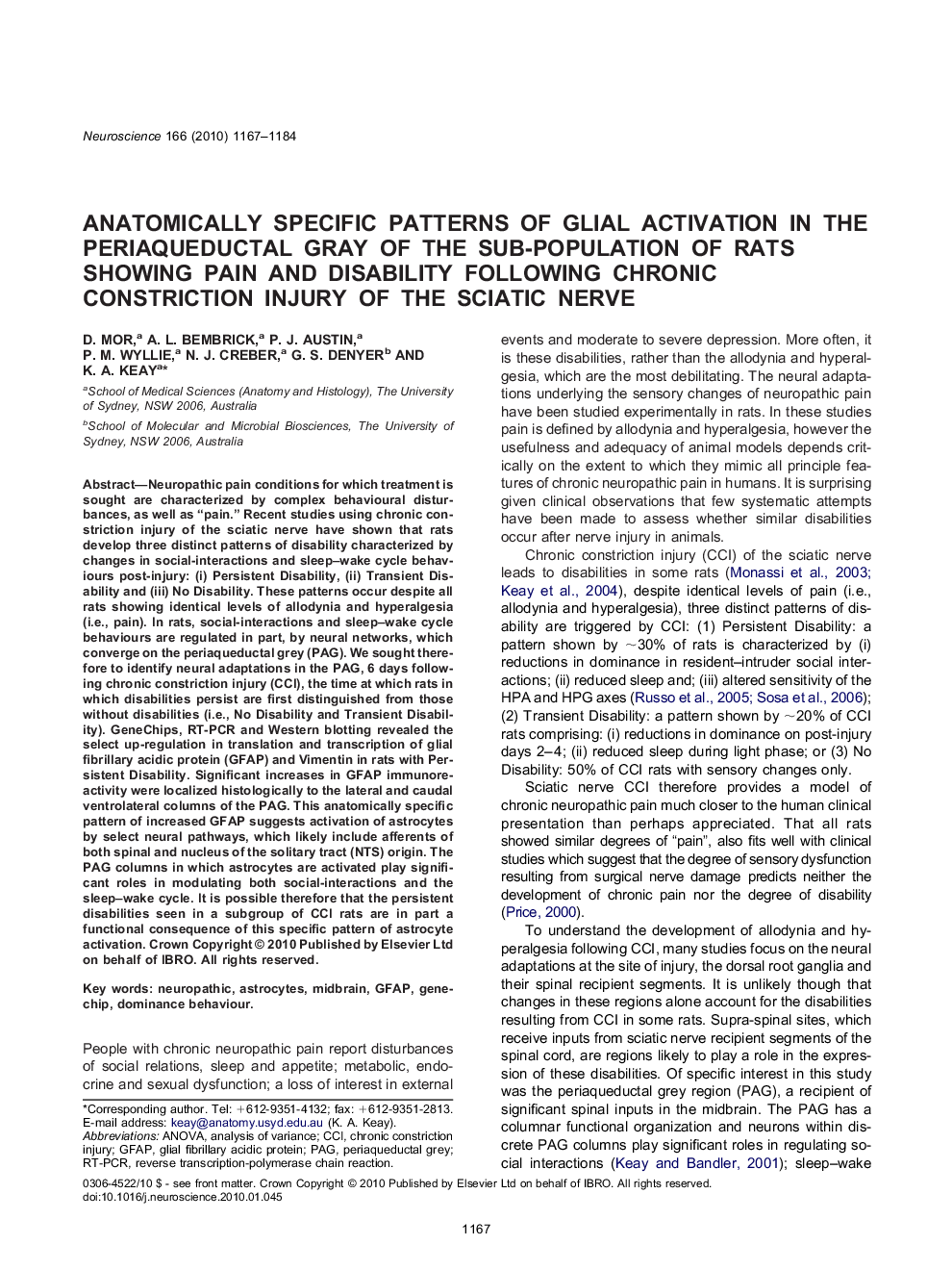| کد مقاله | کد نشریه | سال انتشار | مقاله انگلیسی | نسخه تمام متن |
|---|---|---|---|---|
| 4339395 | 1295752 | 2010 | 18 صفحه PDF | دانلود رایگان |

Neuropathic pain conditions for which treatment is sought are characterized by complex behavioural disturbances, as well as “pain.” Recent studies using chronic constriction injury of the sciatic nerve have shown that rats develop three distinct patterns of disability characterized by changes in social-interactions and sleep–wake cycle behaviours post-injury: (i) Persistent Disability, (ii) Transient Disability and (iii) No Disability. These patterns occur despite all rats showing identical levels of allodynia and hyperalgesia (i.e., pain). In rats, social-interactions and sleep–wake cycle behaviours are regulated in part, by neural networks, which converge on the periaqueductal grey (PAG). We sought therefore to identify neural adaptations in the PAG, 6 days following chronic constriction injury (CCI), the time at which rats in which disabilities persist are first distinguished from those without disabilities (i.e., No Disability and Transient Disability). GeneChips, RT-PCR and Western blotting revealed the select up-regulation in translation and transcription of glial fibrillary acidic protein (GFAP) and Vimentin in rats with Persistent Disability. Significant increases in GFAP immunoreactivity were localized histologically to the lateral and caudal ventrolateral columns of the PAG. This anatomically specific pattern of increased GFAP suggests activation of astrocytes by select neural pathways, which likely include afferents of both spinal and nucleus of the solitary tract (NTS) origin. The PAG columns in which astrocytes are activated play significant roles in modulating both social-interactions and the sleep–wake cycle. It is possible therefore that the persistent disabilities seen in a subgroup of CCI rats are in part a functional consequence of this specific pattern of astrocyte activation.
Journal: Neuroscience - Volume 166, Issue 4, 14 April 2010, Pages 1167–1184